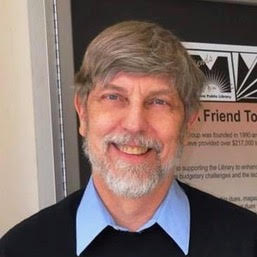President's Message (Fall 2025)
- Paul P. Sipiera

- Oct 3
- 3 min read
I am pleased to share that based on the reports presented at the September 13th Annual Members Meeting, your Planetary Studies Foundation is financially secure and fulfilling its primary mission. It is also very important to point out that 2025 is a year of anniversary celebrations for the Karl G. Henize observatory, celebrating 35 years, and the Doug Firebaugh observatory, celebrating 10 years. Two observatories that we’ve proudly been involved.
Looking back to September 1990, that’s when the PSF hosted the opening ceremony for the astronomical observatory at William Rainey Harper College in Palatine, IL. This facility was named in honor of NASA astronaut and astronomer, Karl G. Henize, for his lifelong scientific achievements. Karl was once a member of the astronomy faculty at Northwestern University and a Mission Specialist on Space Shuttle (STS 51 F). It was also an honor to have one of Karl’s Shuttle crewmates, Dr. Loren W. Acton, participating in the dedication ceremony.
Twenty-five years later, PSF had the honor to reopen an expanded observatory in Freeport, IL as the Doug Firebaugh Astronomical Observatory. Doug Firebaugh was a dedicated Freeport School District science teacher who was instrumental in the 1967 opening and continuous use of the original JETS Observatory. It was befitting to name this new facility in honor of a teacher who has introduced so many people to the wonders of the night sky. These two observatories have proven to be shining stars in PSF’s efforts to provide the public with excellent opportunities to learn about astronomy. PSF is very proud of and grateful to all those people who have contributed their time and passion for the operation and management of these two excellent observatories.
One recent event that clearly marks the passage of time is the August 6th death of astronaut James A. Lovell. History will always remember Jim for his role in the United States’ efforts to place a man on the Moon. His two flights during the Gemini Program and the Apollo 8 orbital mission paved the way for the eventual Apollo 11 landing in July 1969. Apollo 8 not only proved that a successful moon mission was possible, but it also gave humanity a new way of looking back at the Earth. The dramatic Apollo 8 image of the Earth rising above the lunar horizon remains one of the most iconic photos of all times. After the excitement of the Apollo 11 landing, the program was designed to evolve into a series of scientific missions. One of the main reasons that Jim dedicated himself to the program was that he would be given his turn to set foot on the Moon. That opportunity came with the flight of Apollo 13 in April of 1970. Unfortunately, fate took a different turn for Jim when his anticipated landing turned into a heroic rescue mission. Thanks to the expertise of thousands of NASA technicians, and the courage and ingenuity of the Apollo 13 crew, they returned safely to a splashdown in the Pacific Ocean. Jim’s close association with the PSF began in 1998 with a chance meeting at a book signing event with Diane Sipiera. Their conversation led to Jim expressing his interest in going to the South Pole and Diane said that PSF could make that happen. The rest is history with Jim standing at the South Pole on January 16, 2000, with fellow astronaut Owen Garriott and several other PSF members. That Antarctica 2000 Expedition remains as the “high water mark” in PSF’s long history. PSF is also grateful for its personal association with so many of NASA’s Mercury, Gemini, Apollo, Skylab and Space Shuttle astronauts.
I am pleased to report on a major accomplishment in our meteorite research program. On July 27th PSF’s extensive collection of over 1,200 meteorite analytical probe sections and billets were transferred to the Yale Peabody Museum in New Haven, CT. As a bonus to those materials, over 300 meteorites from the David Smith Collection and several more specimens from the Ted Bunch Collection were added to the shipment. PSF is extremely proud of its accomplishments in meteorite research and especially its association with the Yale Peabody Museum. Our future in meteorite research is extremely bright.
Paul P. Sipiera
President and CEO



Comments